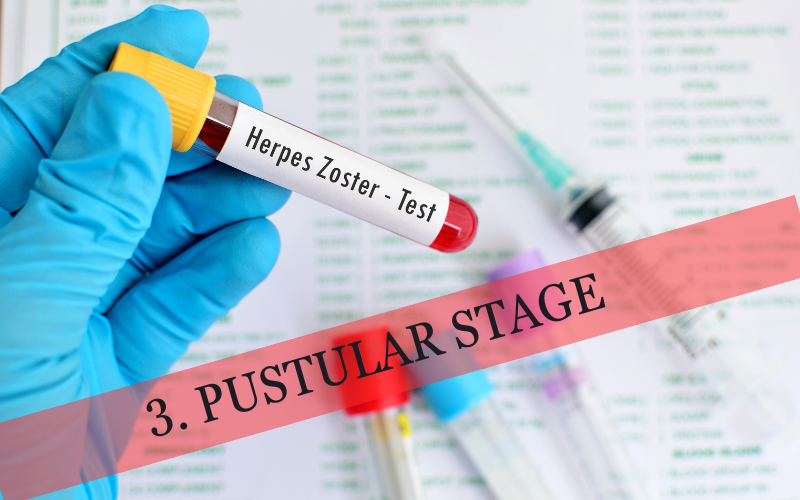3. Pustular Stage: The Turning Point in the Battle

Following the blistery assault of the active rashing phase, the pustular stage serves as a pivotal juncture in the shingles journey. As the name suggests, this stage witnesses the transformation of the clear fluid-filled blisters into pus-filled pustules.
The pustules, although uncomfortable, are a sign that the body is actively fighting the virus. White blood cells rush to the infected area, leading to the collection of pus. It’s a sign of the immune system in action, combatting the viral onslaught.
Despite the body’s vigorous response, this phase can be especially taxing. The skin surrounding the pustules might appear swollen, tender, and inflamed. It’s not just a physical battle; the pain can sometimes take a toll on one’s mental well-being too.
While the pustules might seem worrisome, they don’t typically last long. Over time, they begin to dry out. As they do, they form crusts, which eventually flake off. It’s nature’s way of healing, a testament to the resilience of the human body.
The transition from blisters to pustules to crusts signifies the body gaining an upper hand over the virus. It’s the turning point, signaling the beginning of the end of the shingles episode. (3)